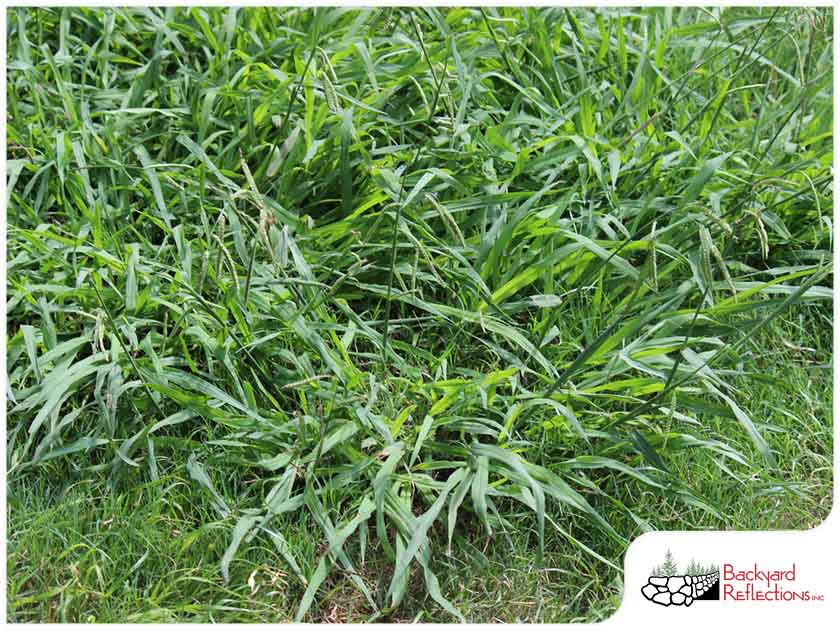Crabgrass may be removed from your yard in a few simple steps. Pulling weeds out by the roots, using weed killers, or hiring outdoor living specialists are all choices. You might have to fight a constant battle, whichever approach you select. Healthy lawn maintenance depends on knowing how to get rid of the common weed crabgrass. Here’s how to prevent it from growing new stalks and get rid of it permanently.

What Is Crabgrass?
Crabgrass and other unwelcome weeds deplete the soil of essential moisture and nutrients, robbing plants like lawn grasses, flowers, and vegetables – plants that you value – of those resources. Homeowners constantly struggle with this annual grass. It emerges in the spring and grows into big, thick, flat clumps that displace the nearby lawn grass and other plants.
Since crabgrass is annual, your lawn will become patchy and sparse where it dies after the first fall frost. When their seeds grow the next spring, those bare places will fill in with additional crabgrass or other weeds if they are not addressed.
How to Get Rid of Crabgrass
You must understand when to kill crabgrass before you can learn how to do it. The ideal period for crabgrass to germinate and go to seed in the majority of continental U.S. regions occurs when the soil is between 50 and 60 degrees Fahrenheit for five to seven consecutive days. After germination, crabgrass grows quickly in competition with lawn grasses, which emerge after crabgrass weeds. It could have produced up to 150,000 seeds by the time it dies in the fall.
To take back control of your lawn from the crabgrass invaders, try changing a few of your landscape gardening and care practices.
- Let your grass grow a little taller. Crabgrass enjoys direct sunshine. The good grasses cannot shade the other portions of the lawn when it is mowed excessively short. Ask a landscaper about the typical species sowed and the height at which they should be mowed as different grass species require varying mowing heights. If you think your lawn has a mix of grasses, let it grow taller.
- Choose grass species suitable for your climate. Crabgrass has less room to grow on a lawn that is generally healthier. Climate-adapted species will establish roots more quickly and develop into a strong, healthy lawn.
- Fertilize regularly for your grass types. Fertilizer promotes growth, and a surge of new grass growth will outcompete crabgrass seedlings.
- Water less frequently but more deeply. Homeowners often overwater their lawns. Deep watering every few days helps grass and prevents crabgrass. Between waterings, letting your lawn dry out actually stimulates the grass to establish stronger roots. Light watering encourages shallow surface roots that can dry out easily.
- Use herbicides. Weed killers prevent crabgrass germination. Pre-emergent herbicides can halt crabgrass if applied while soil temperatures are hotter in early spring and crabgrass is sprouting, as well as before they can harm anything else you’re planting on your lawn.
Backyard Reflections is a family-owned and -operated landscape design company that creates one-of-a-kind landscape solutions for residents of the West Metro, Annandale and Brainerd Lakes areas. We design and construct patios, outdoor kitchens and decks, gardens, fire pits, retaining walls, lighting and more. Call us at (320) 274-6336 if you live in Annandale or (218) 454-1065 if you live in Nisswa. You may also fill out our online form to schedule your no-obligation consultation.



Leave a Reply